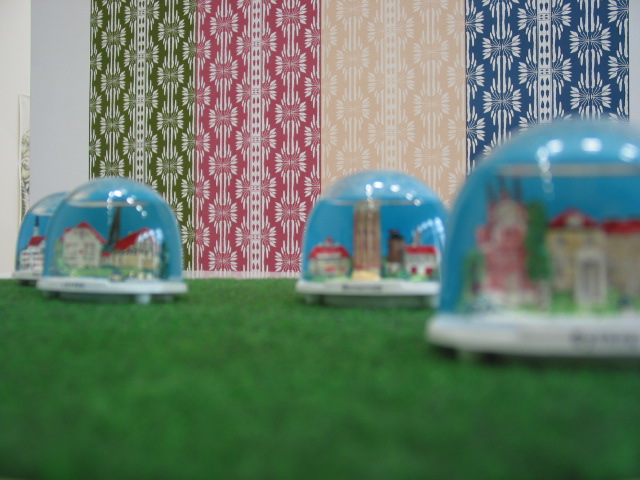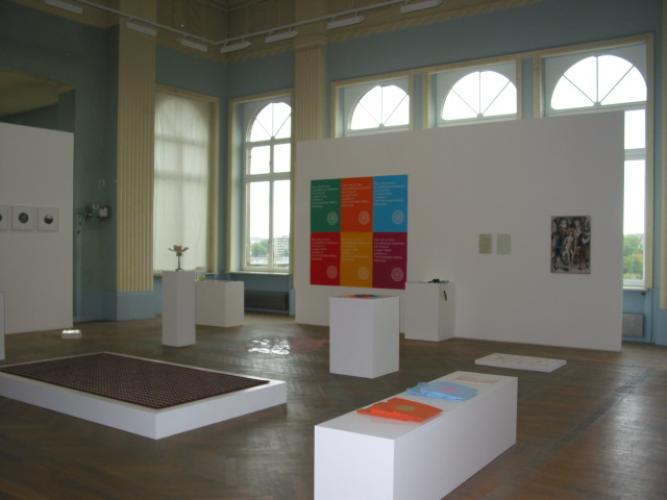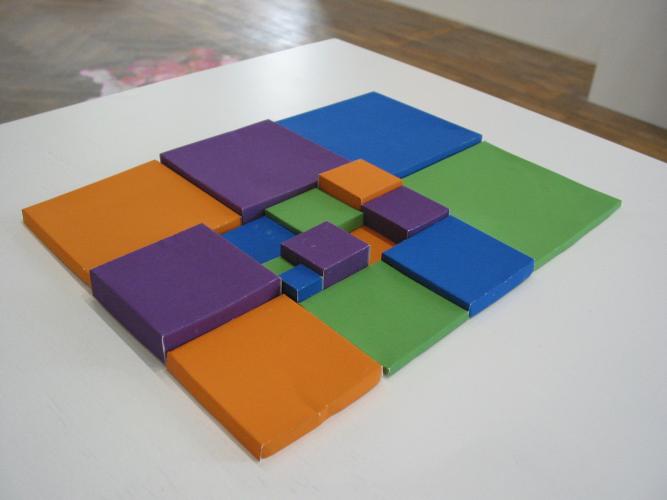
Olaf Nicolai – Odds and Ends
From October 4th to November 30th, 2003, Casino Luxembourg presents Odds and Ends, an installation by the German artist Olaf Nicolai (born 1962 Halle/Saale; lives and works in Berlin). Odds and Ends is "an editing room hosting a series of editions created in direct reference to exhibition projects and installations, either representing the projects themselves or serving as instructions for their realisation. The editing room is updated for each new presentation. It represents a 'retrospective in the box', made comprehensible by en miniature conceptual and formal associations between different works. In the arrangement of wallpapers, pieces of clothing, a carpet or perfume with notebooks, posters, publications, CD-ROMs and souvenirs, Odds and Ends appears to be a private interior on display." [Olaf Nicolai, "Rewind" Forward, Hatje Cantz, 2003]
While classifying these objects as "editions", Olaf Nicolai refers to their "model-scale" existence as well as to their quality as objects subject to reproduction and multiplication. This explanation, which appears very general, is in fact the fundamental principle underlying Nicolai's artistic process. Many objects in Odds and Ends are instructions for action or guidelines for production. This is for instance the case for the work The Pirate Edition (2000), a series of pattern sheets to copy trade-mark fashion. Other works, like the book 30 Farben (2000), provide all the elements necessary to realise an installation; other works still are miniature exhibition projects presented in the shape of do-it-yourself sheets (Landschaft, metaphysisch und konkret, 1999).One now better understands the association between Nicolai's installation and editorial work, which functions in a relation of reciprocity, even translation. Often Nicolai relies on already existing models and plans, which, when being reproduced, open up the way to new reflections and actions. This process reveals, on the one hand, the „manufactured" character of the object, i.e. its being a mere product; on the other hand, it brings to light the shifts of meaning related to the change of context and the repeated appropriation by the artist.
Partners
With the support of Institut für Auslandsbeziehungen.

